South Africa is a popular travel destination for a number of reasons. Since we went there this (European) summer (i.e. SA winter), we are starting to understand why. I think it is the combination of wildlife (safari), stunning landscapes, culture (from wood carvings to braai (= SA barbecue)), history (both ancient and recent) and delicious food and drinks (including Stellenbosch’s wines and the omnipresent biltong (= dried meat)) that makes this country worth a visit every moment of the year. South-African summer (October to February) is still the most popular period for tourists and travelers, although winter in SA also has a lot to offer! One of the highlights of winter are the whales, which are supposed to be abundant in South-African waters from August onward. You can’t see them in (SA) summer!
If you want to visit South Africa in winter, you should realise it can become quite cold, especially during the night (we had night temperatures around 5°C during our stay). And the weather isn’t always perfect: it can be rainy and cloudy in this period. I think we were pretty lucky with regards to the weather. We did have some rains, but we also had a lot of sun most of the time and one day temperatures even rose to 30°C! So I think it’s fair to say that the weather is rather unpredictable, but just don’t expect to go sunbathing or anything…
So, we went to the Western and Eastern Cape Province of South Africa in August, and seeing the whales was definitely one of our main objectives for this trip. Avoiding the crowds was one of the reasons to go in winter. After our visit to Cape Town and its surroundings, we set off to Gansbaai, thé place to be for whale watching, and, if you’re lucky, for close encounters with a great white shark.
We had planned this trip very meticulously, but of course, as always when you go traveling I think, books and websites can never fully prepare you for the real adventure. We were faced with some disappointments, but also with unexpected discoveries…
We followed the N2 from Cape Town and arrived at the coast after an hour or so. The views of the sea and rugged coast here were marvelous! We really enjoyed driving along the seaside and stopped several times to take some photos. We didn’t see any whales, though.

Bettysbaai (Betty’s Bay) was our first stop of the day. The Stony Point penguin colony is definitely worth visiting, even if you have already seen the penguins at Boulders Beach. The colony seemed bigger here than on Foxy Beach, there were much more other animals (dassies, cormorants, geese…) and the setting was more natural in my opinion. It was less touristy here as well. We were walking in between these lively birds on a wooden walkway and felt more like bird watchers than tourists. We could come very close to them and the penguins can (and do) pass underneath the walkway.
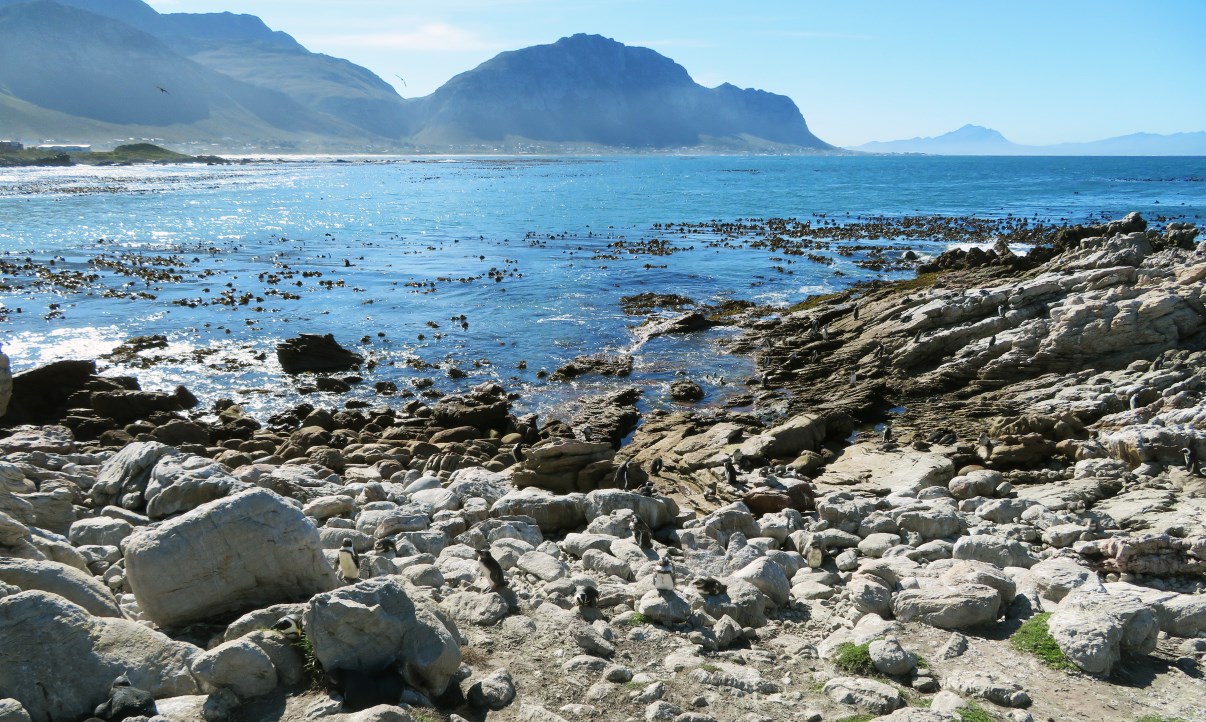
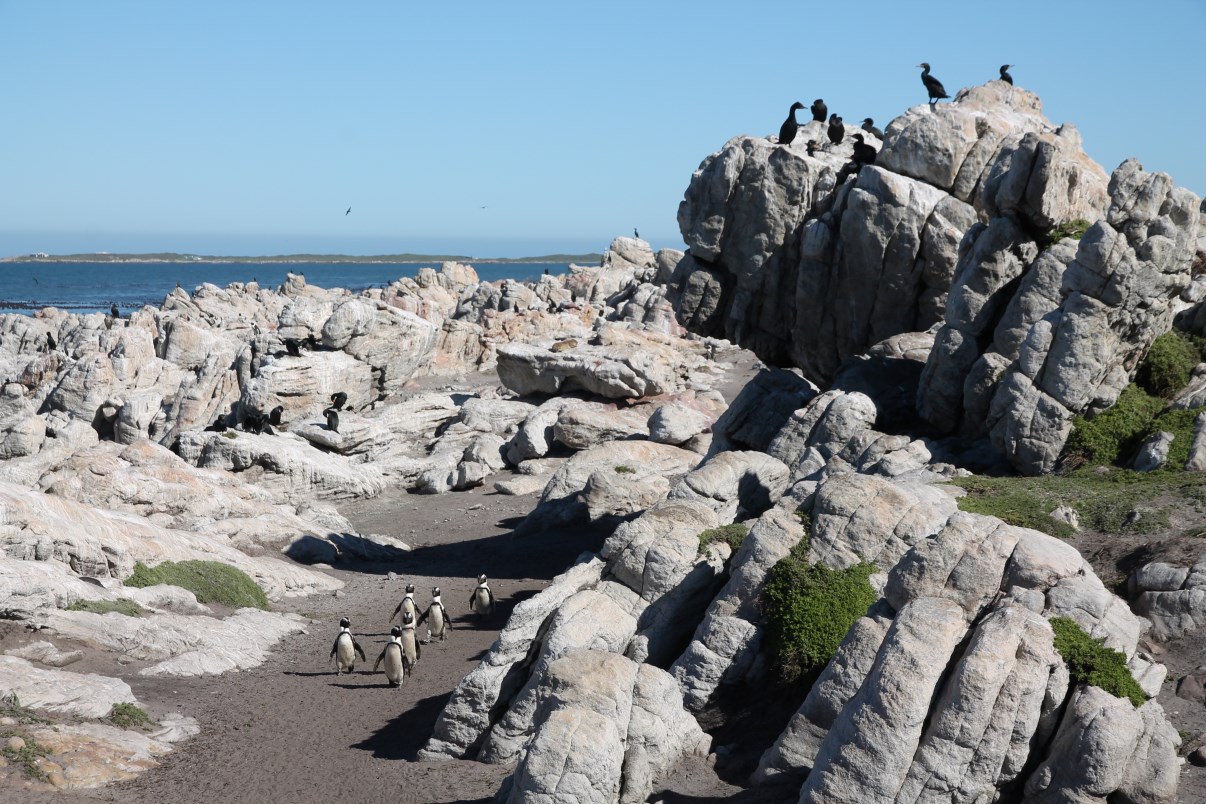
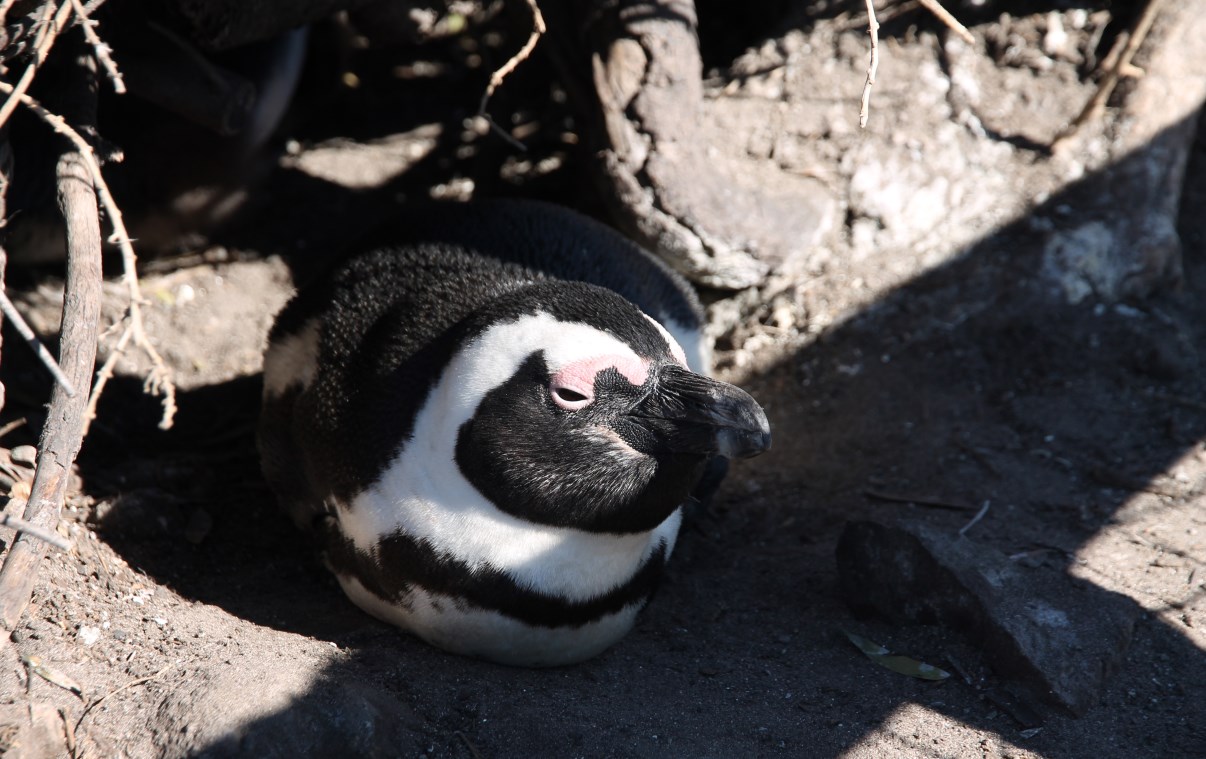
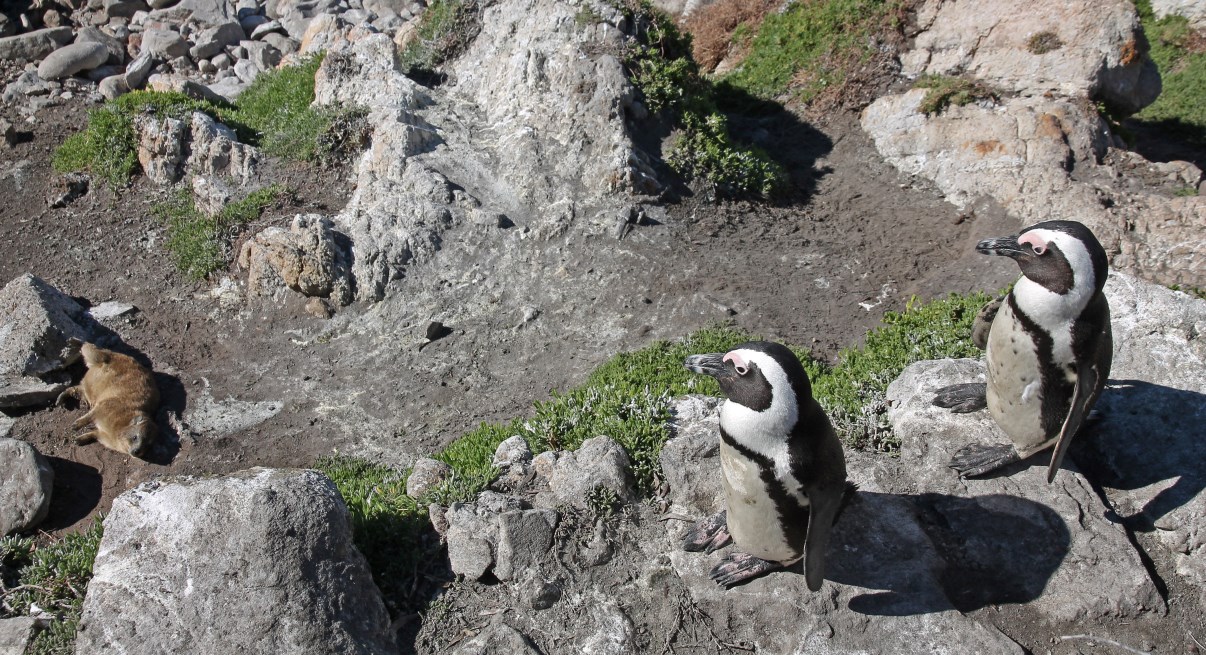
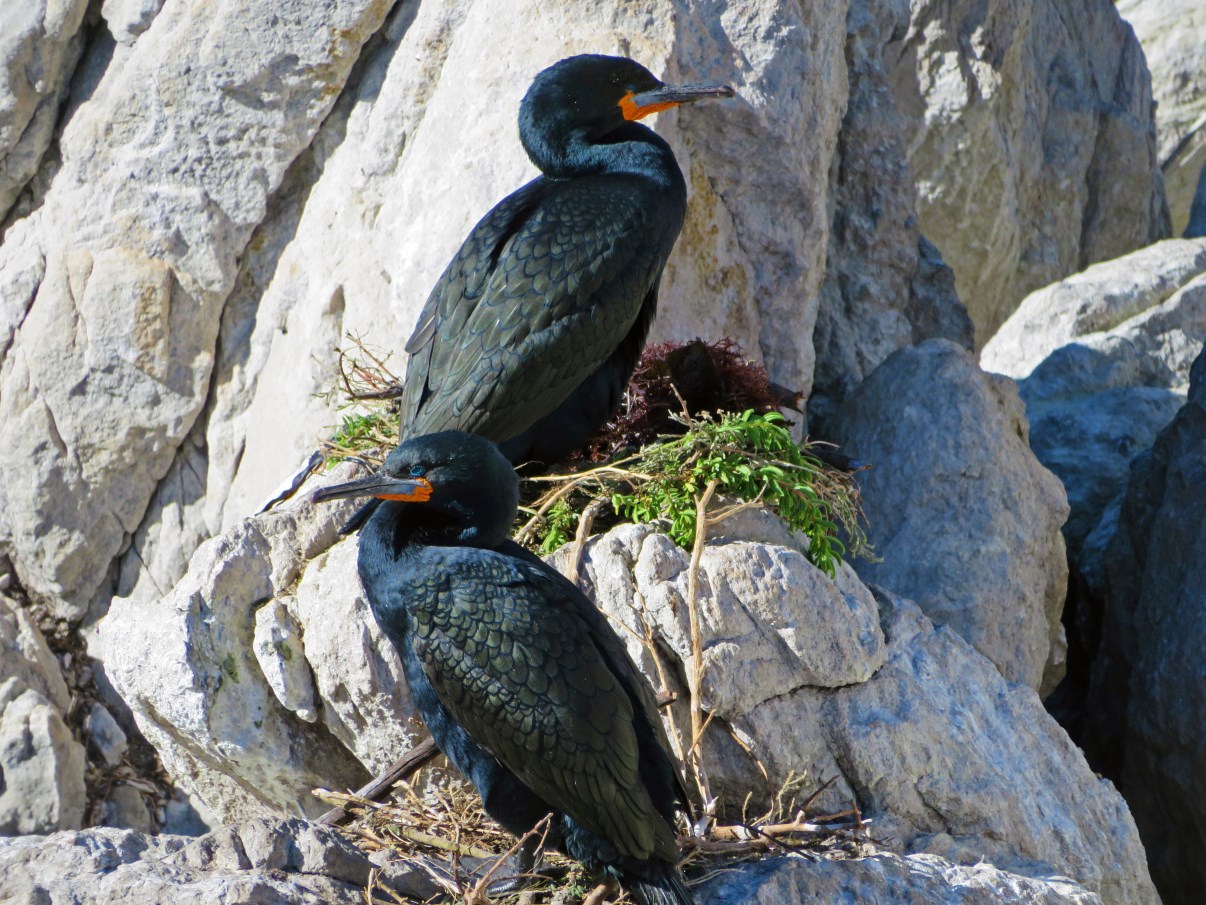
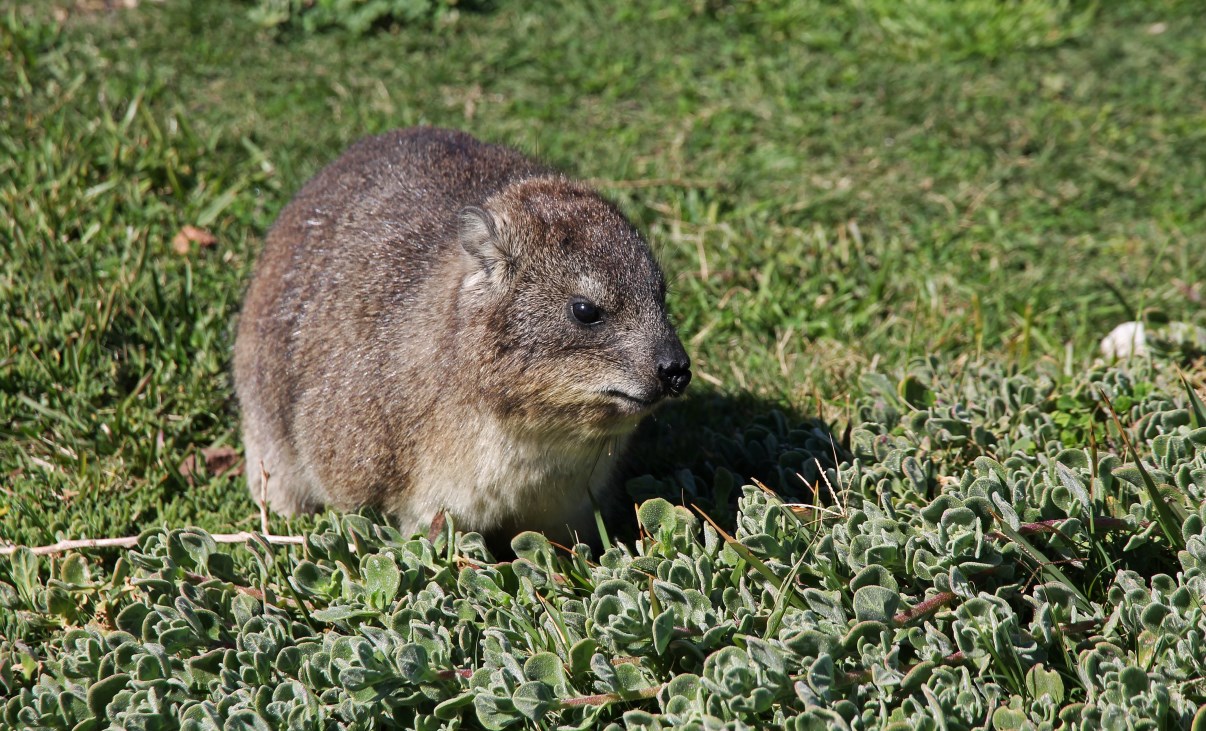
We had lunch in Kleinmond, a small coastal town with a lot of restaurants. The weather was good, the food was even better!
We had rented a self-catering cottage at Oom Piet. The owner was really friendly and the cottage (with sea view!) was very cosy, spatious and clean. It even came with electric blankets, a luxury that made us very happy indeed. The first evening, we went to the harbour of Gansbaai. Although the most notable building here is a factory that produces canned sardines, we still would recommend this small excursion. We saw an inquisitive fur seal circling around a fishing boat, a couple of beautiful African Black Oystercatchers and some Blacksmith Lapwings, and we collected many Abalone shells (which were huge!).
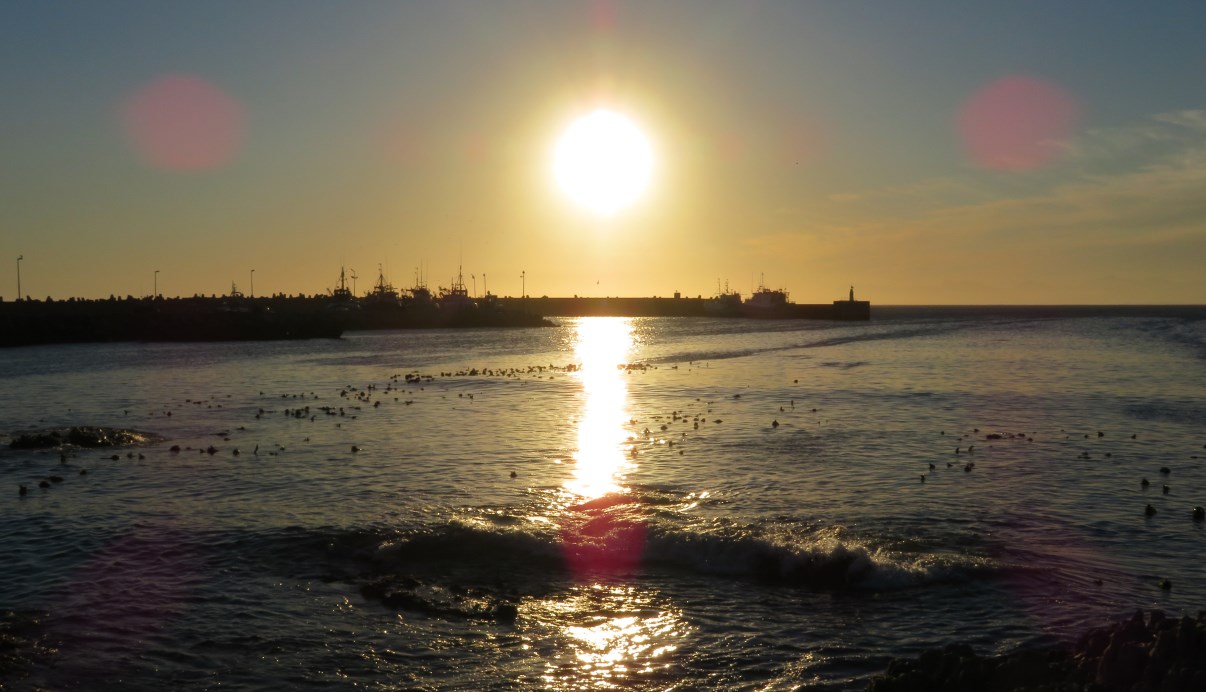
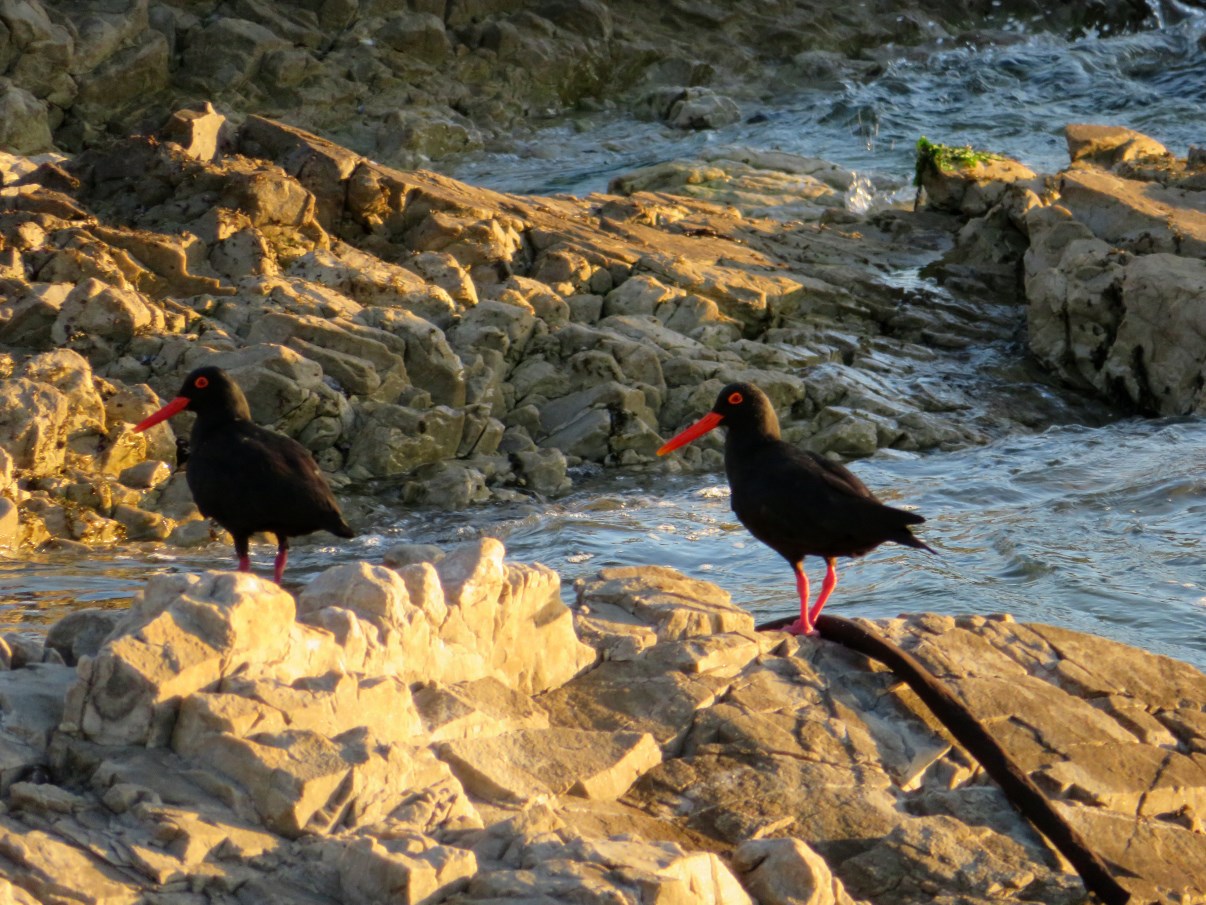
The next morning, we drove to Kleinbaai to disembark on a whale watching cruise with Dyer Island Cruises. We chose this company, because it offers conservation-oriented ecotours, with expert knowledge about the entire ecosystem. On their guided tours, they educate the public about marine life, threats by human interference and other conservation issues. They are also actively involved in many marine conservation projects. After a short introduction on some core species and their ecology, followed by the safety instructions, we went on board.

The weather wasn’t perfect: there was quite some wind and a considerable swell, which made for a bumpy ride. We were also told that whale sightings had been very limited the last couple of weeks: the arrival of whales from Antarctic waters was delayed this year due to El Niño effects. This was a disappointment, but we didn’t give up hope. The boat first navigated towards Shark Alley, a hotspot for Great White Sharks. We stopped near a few cage diving boats and waited. Again, we were informed that shark numbers had been very low the last weeks, so we didn’t have high hopes for any sighting. But then, when the captain had already signaled we had to leave the area, a shark suddenly jumped out of the water and attacked one of the boats’ bait. As quickly as it arrived, it disappeared again. Still, it was a magical moment. One for the bucket list…
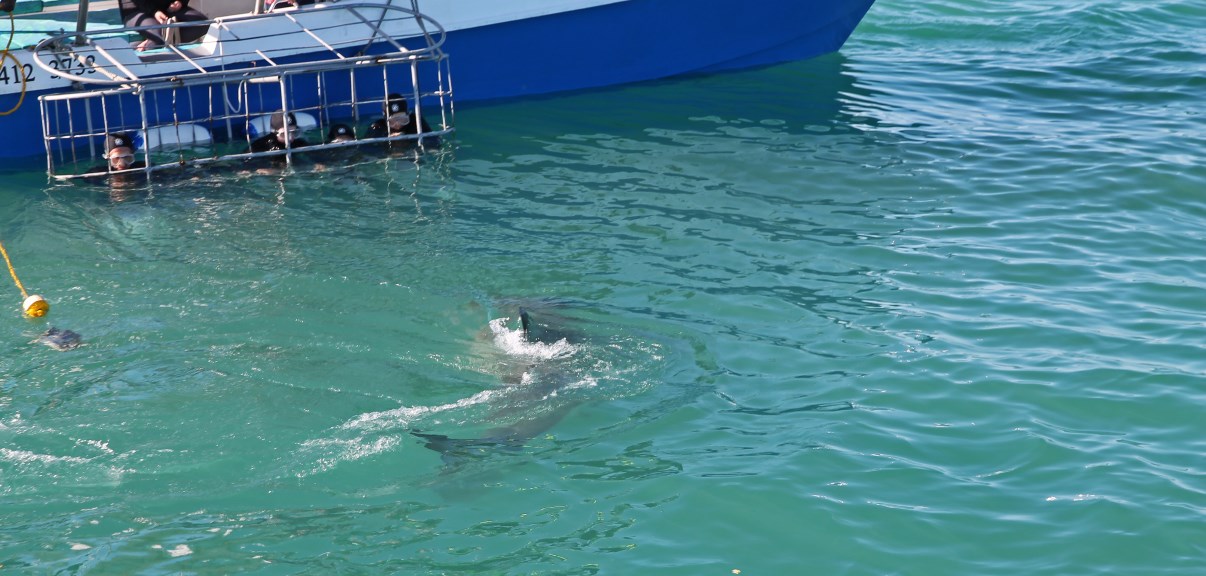
Although numbers were low and sightings scarce, we did see a pod of humpbacked dolphins, a lonely penguin, a couple of fur seals (one was eating some squid for lunch) and a few Subantarctic Skua’s, albatrosses and Cape Gannets. But still no whales…
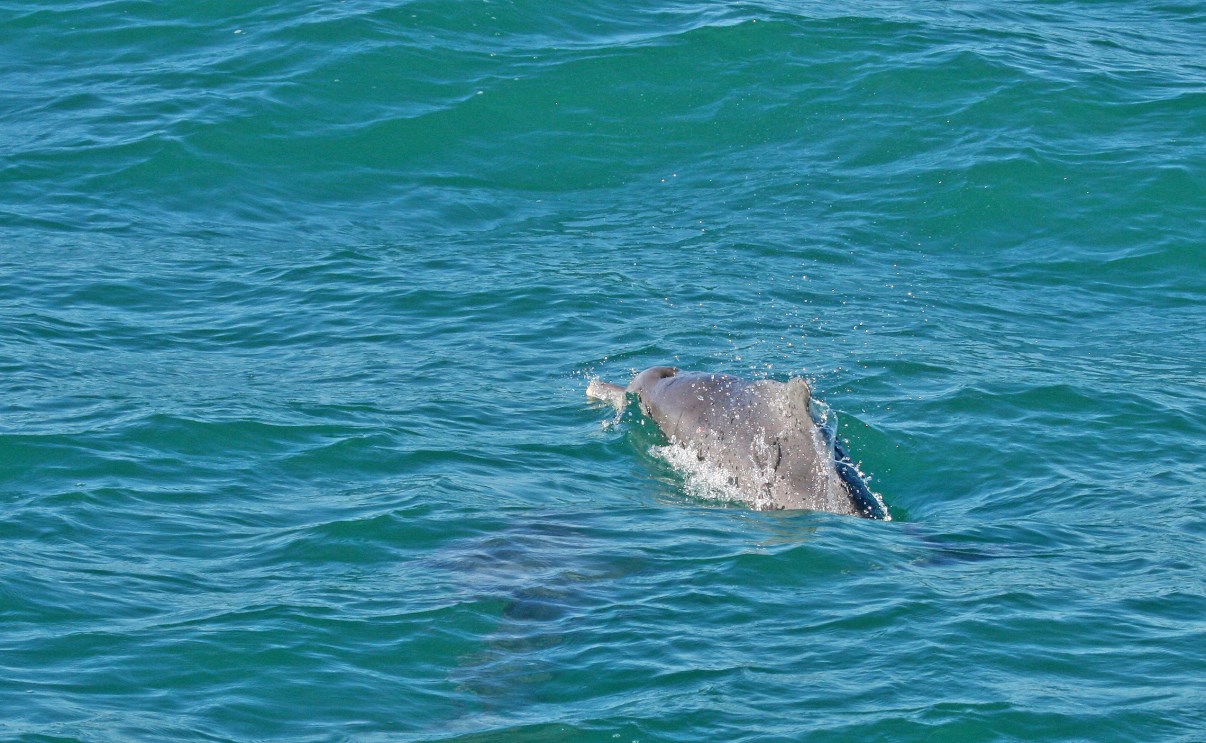
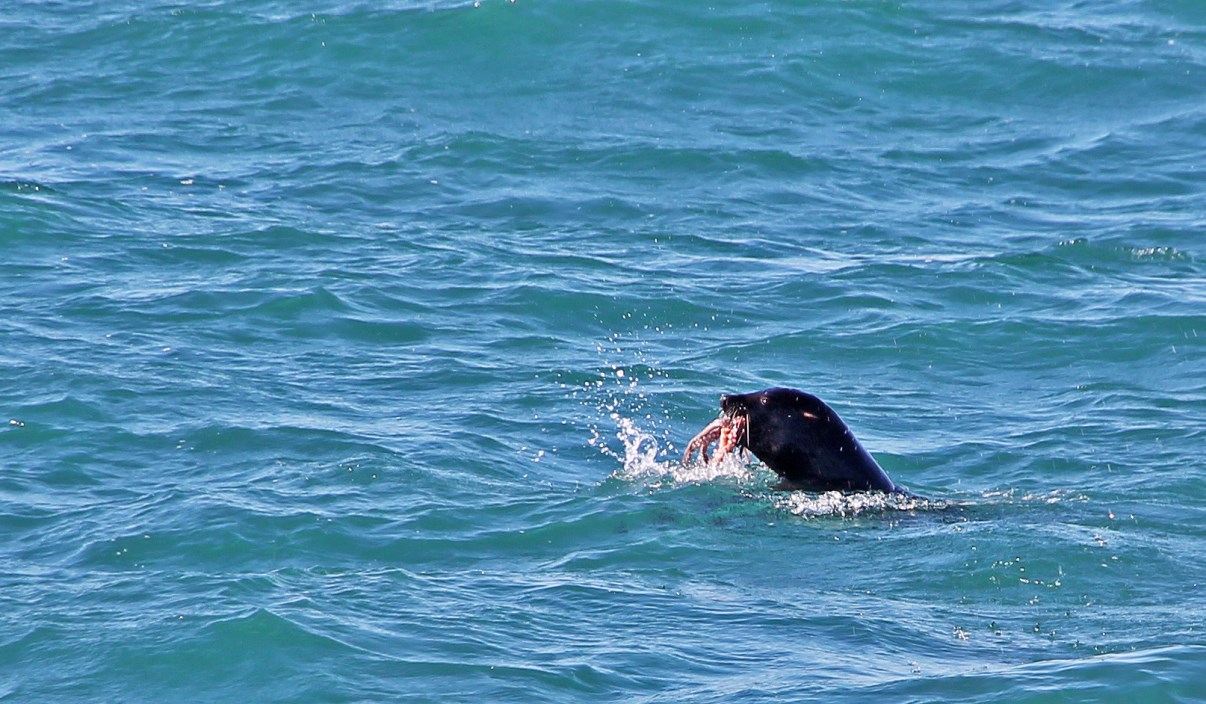

After more than an hour of , we headed for Geyser Rock, which hosts a colony of no less than 60000 Cape fur seals. Really impressive!
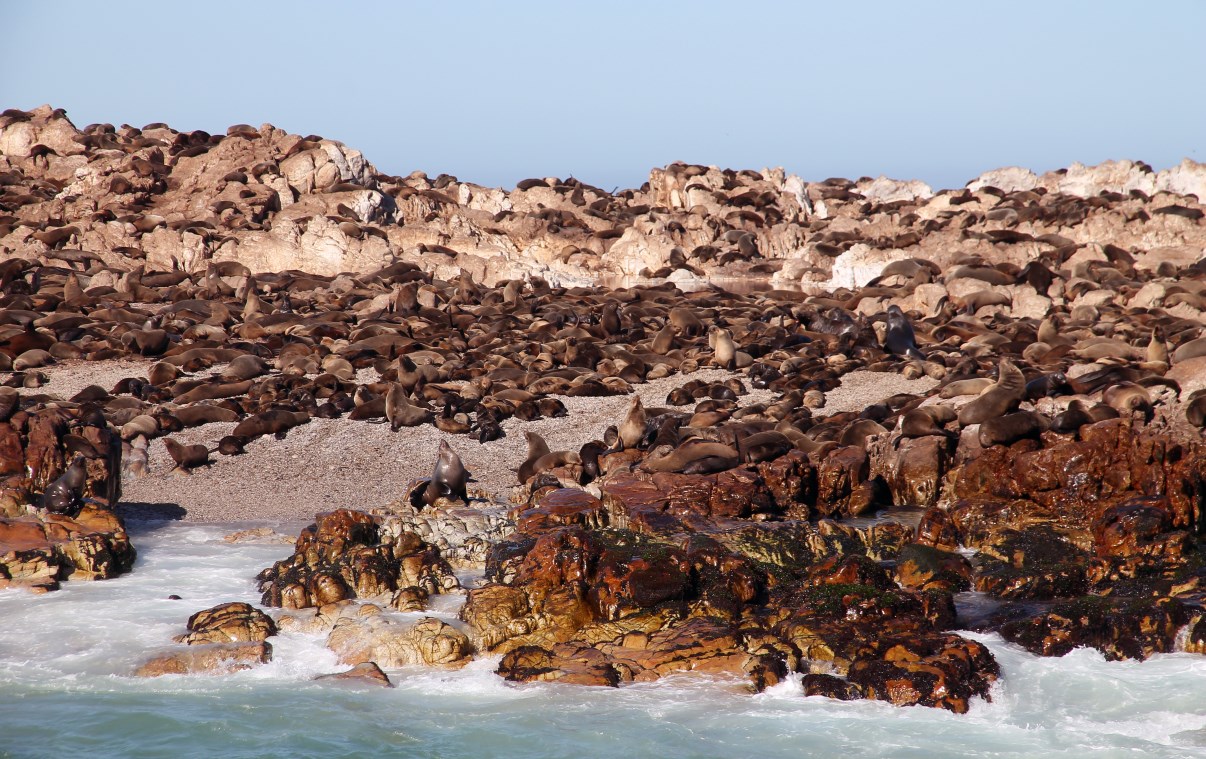

Shortly after we left Geyser Rock, a first whale was seen. We sailed to its location, but the Southern Right Whale had already disappeared. Just before we left for Kleinbaai again (we were already an hour late, because the company was determined to find us some whales), the same happened with a Humpback Whale: we saw its fin, a spray, and then it was gone again.
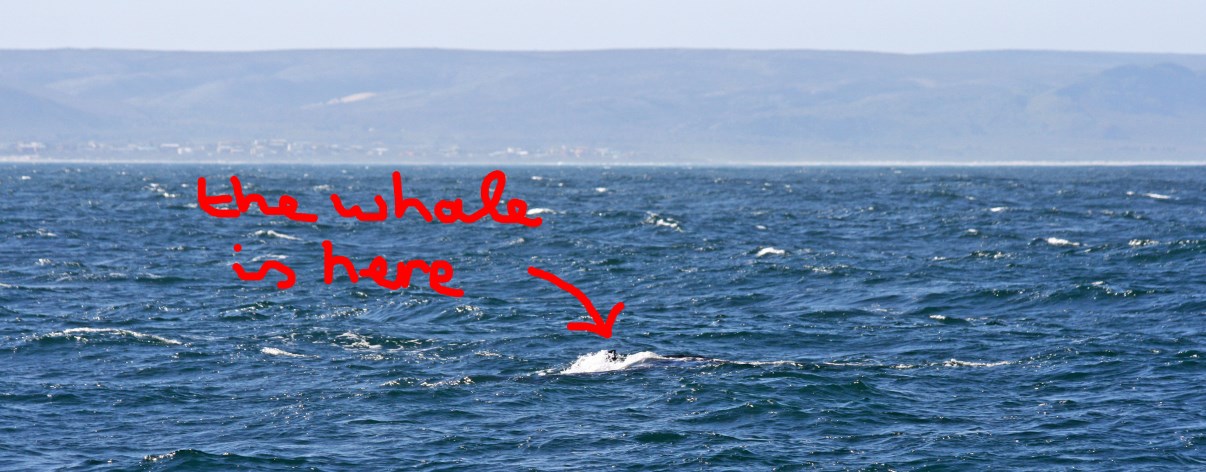
We look back on this day with mixed feelings: while the whales played hide-and-seek, we were truly happy with having seen the shark.
We were back on shore around 1.30 PM, so there was plenty of time for yet another adventure. Fernkloof Nature Reserve is a reserve in the Kleinrivier Mountains near Hermanus, which is famous for its Fynbos, a type of shrubland. This vegetation type is dominant in the Cape Floral Region, a natural UNESCO world heritage site. Going for a walk in this nature reserve is definitely a must-do when you’re in the neighbourhood, and it was one of the highlights of our trip. There’s a car park at the visitor’s centre, from where you can choose between a number of fairly easy walking trails that offer magnificent views over Walker Bay. We chose to follow the Red Route, a 90-minute hilly walk that first took us to a waterfall in a small forest, after which we wandered on the slopes of Fisherman’s Kloof.
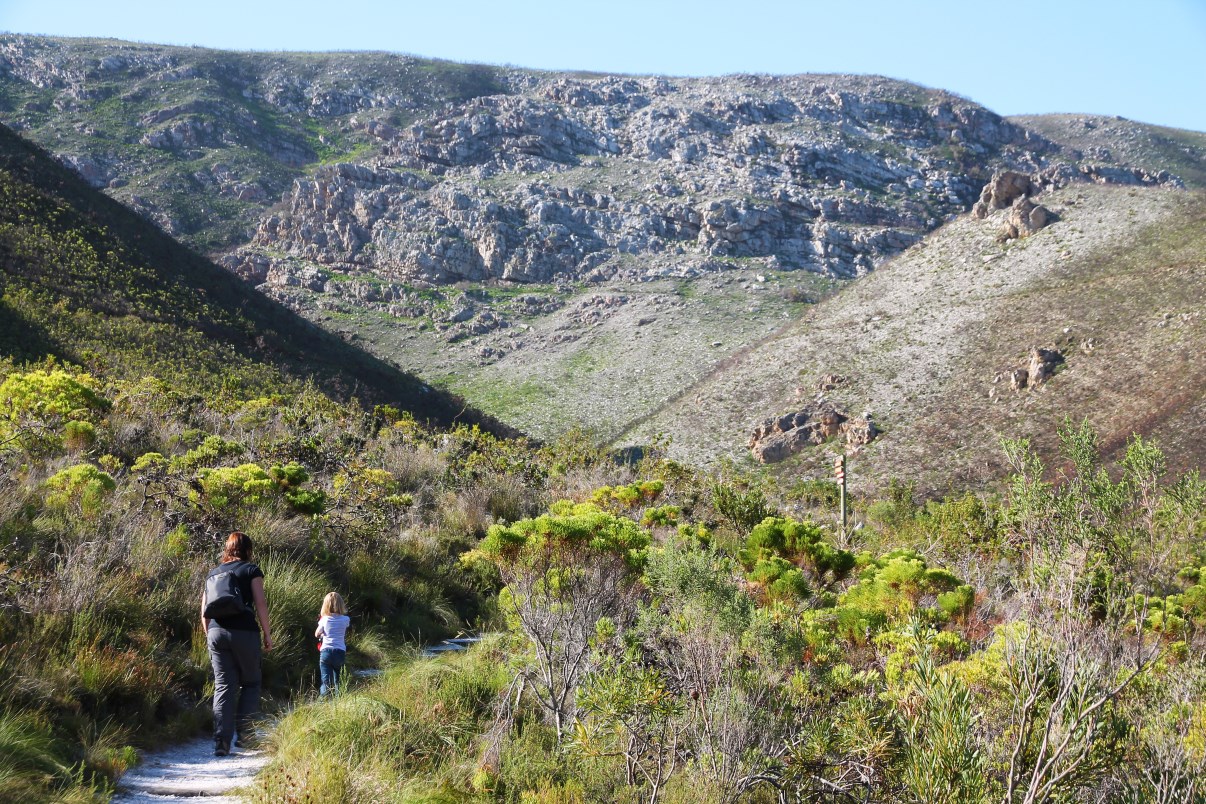
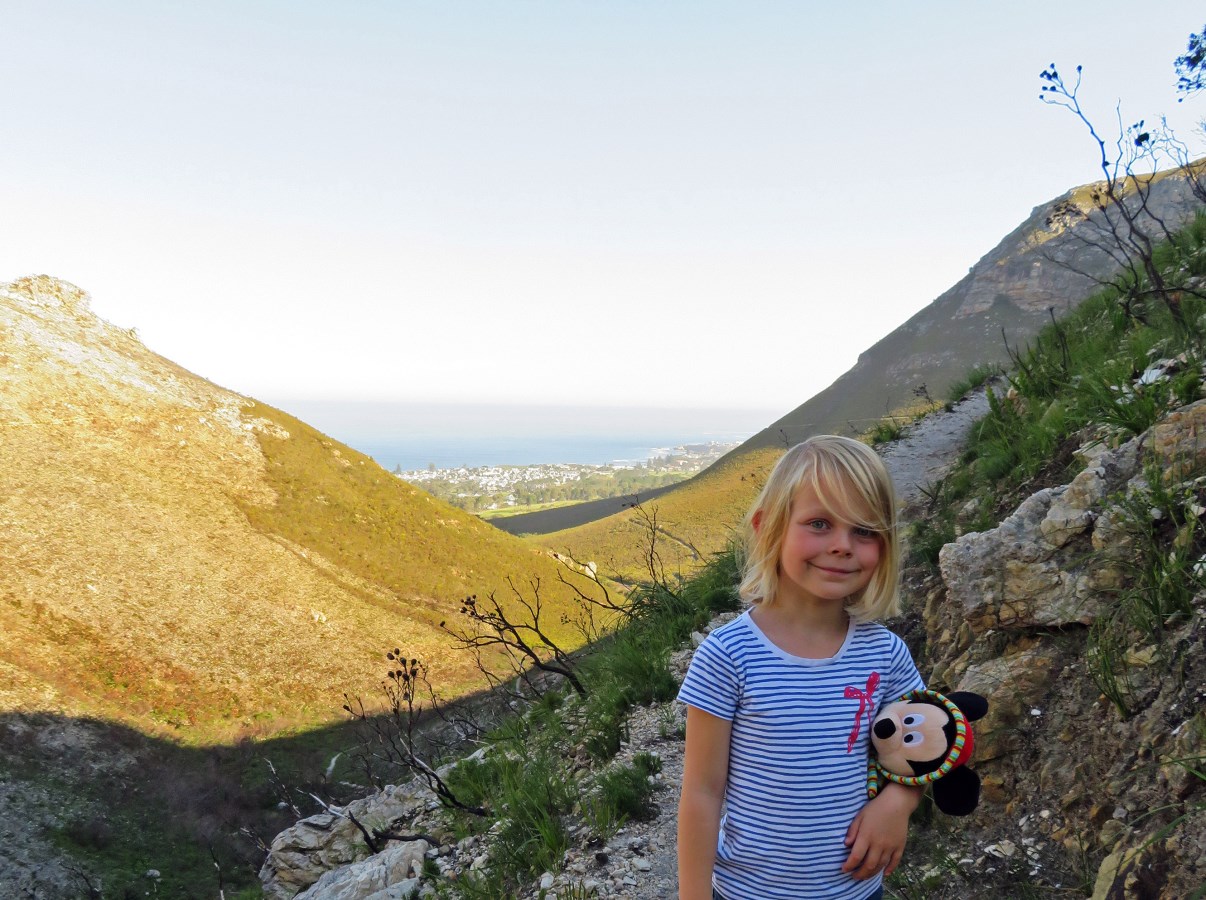
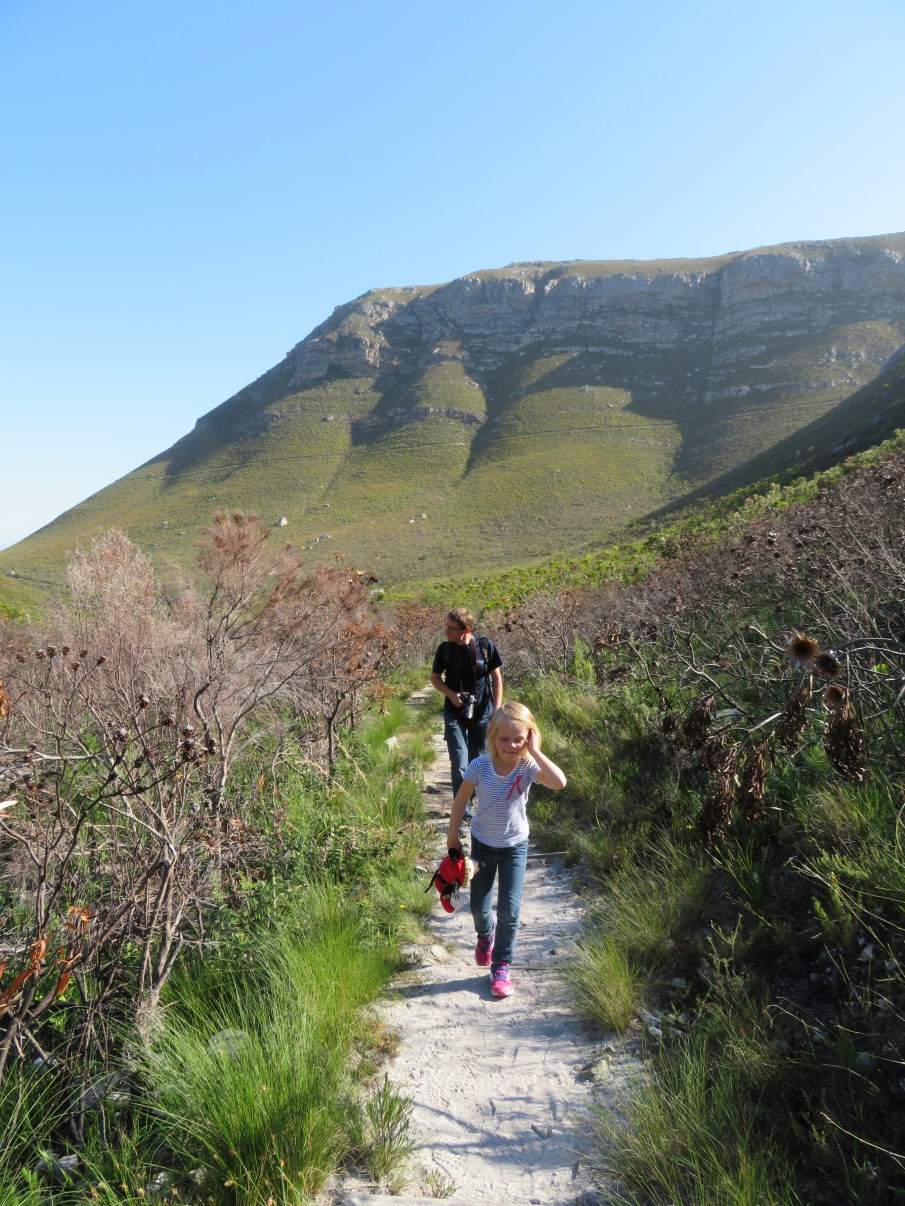
Fernkloof has a very high plant species richness, including many species of Protea. Even though we didn’t see any mammals here, there were turtles and many colourful bird species to satisfy our naturalist’s curiosity.
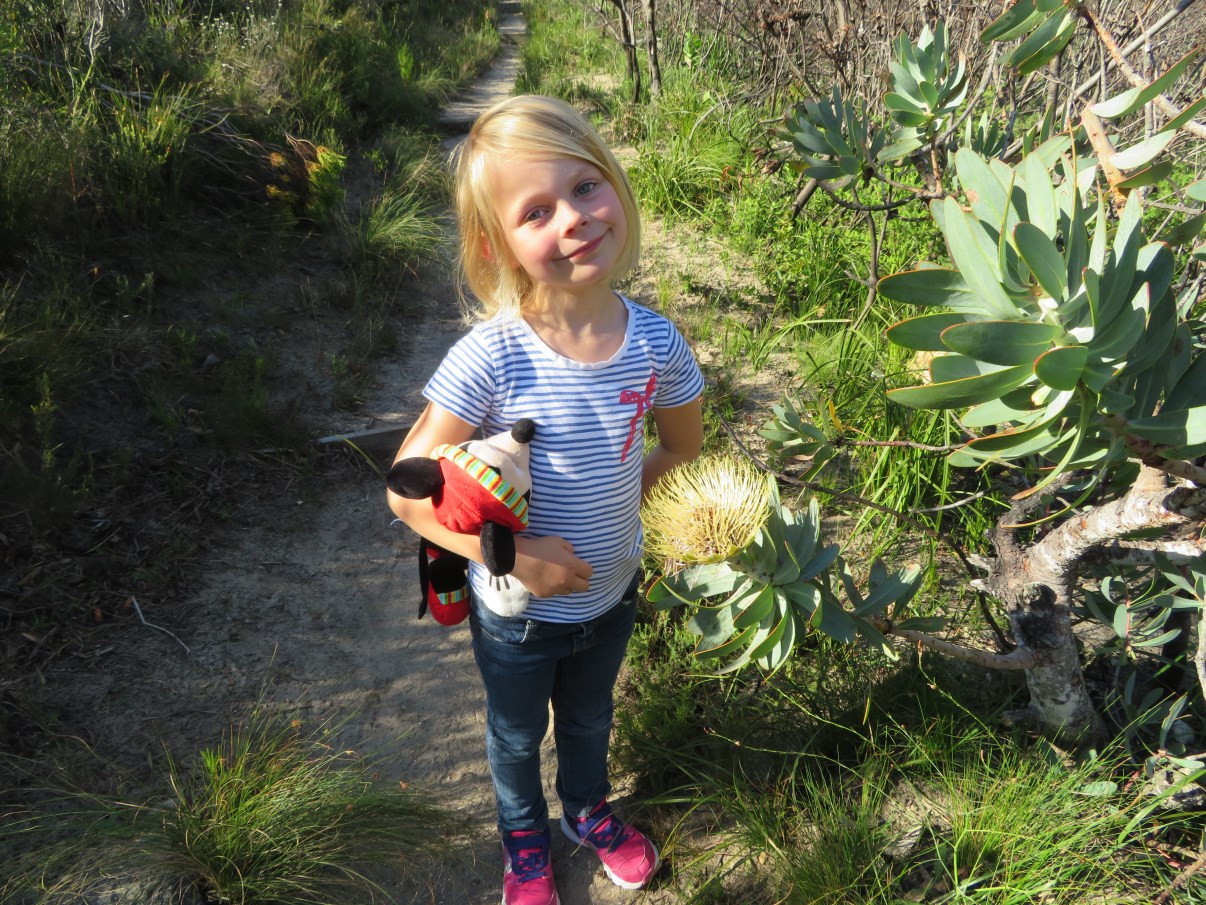
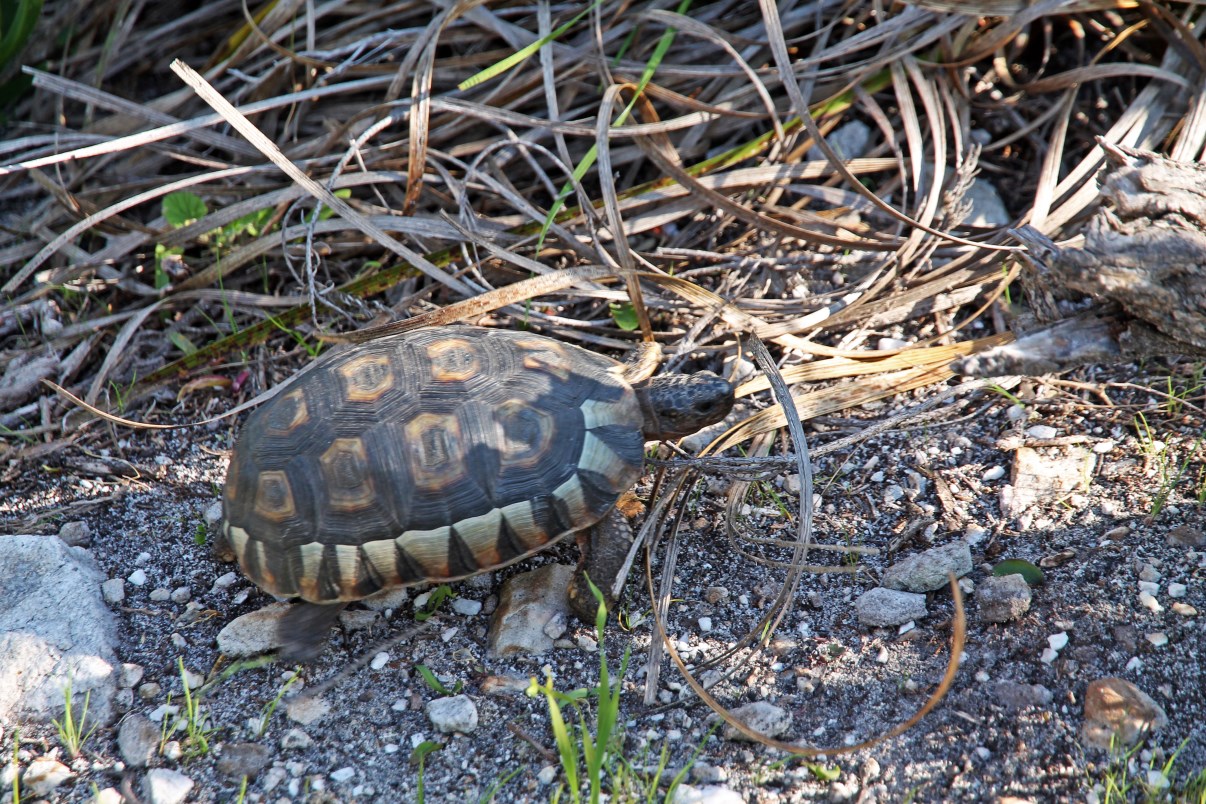
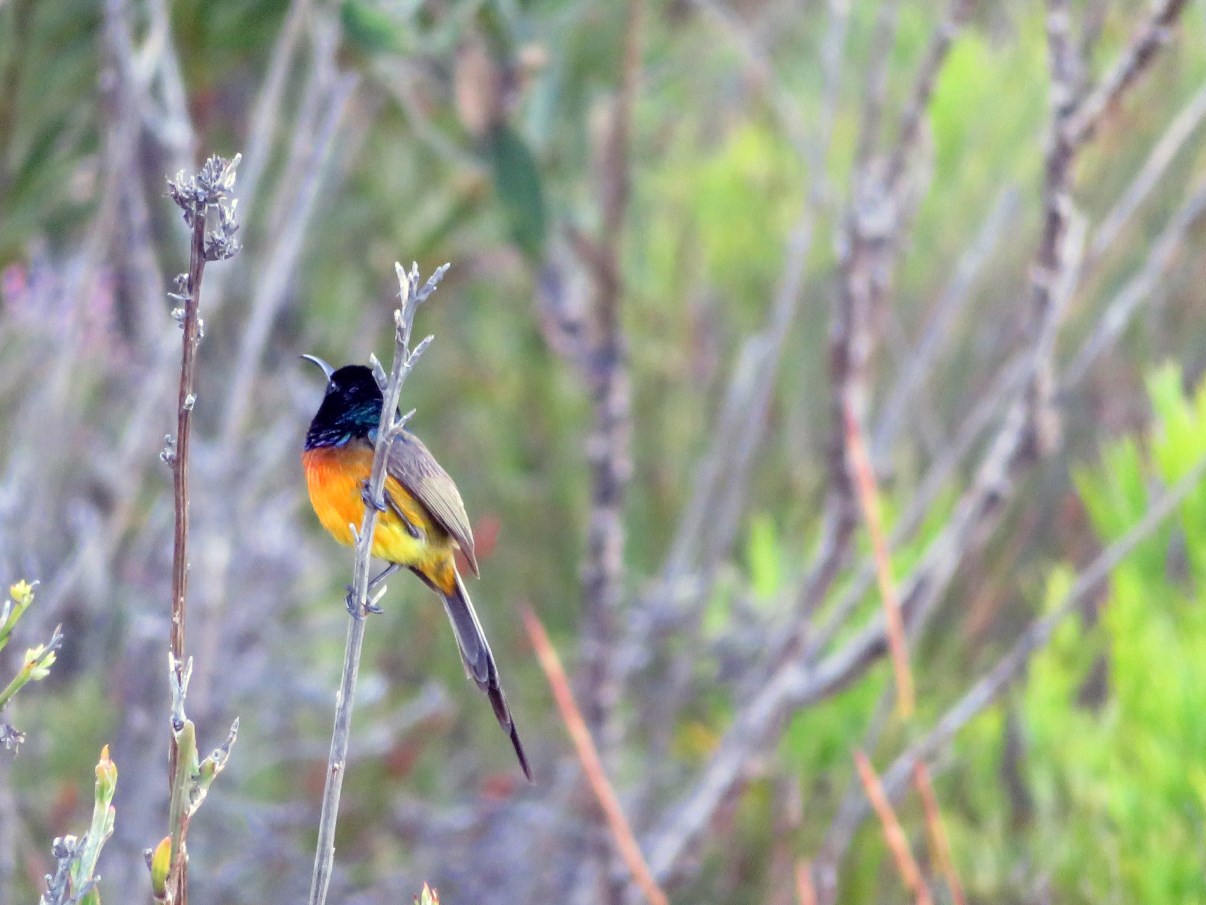
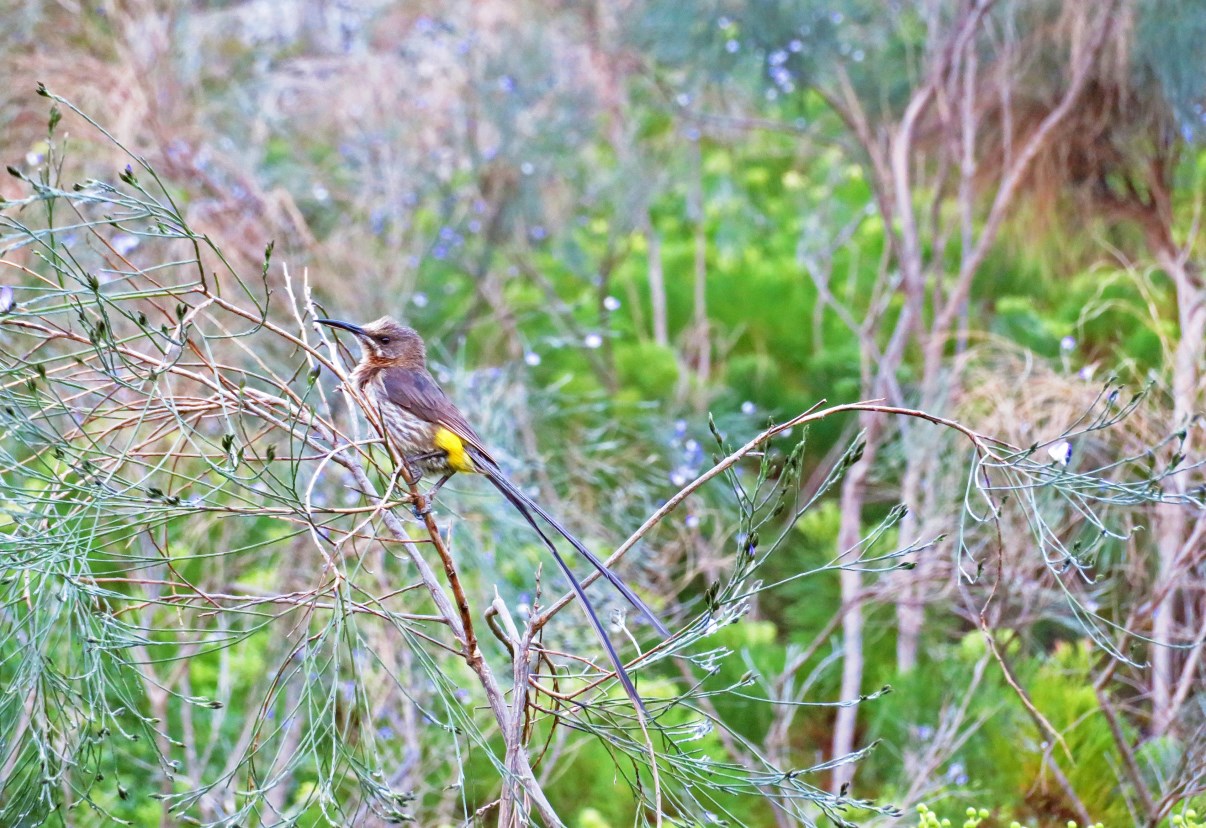
All in all, it had been a rewarding and memorable day and we just had to celebrate it with a delightful diner at Lemon Butta in Hermanus, a quayside restaurant specialized in seafood. The seafood curry I ate here was without any doubt the best food I had in those two weeks in South Africa.
Cape floral region protected areas (nr. 1007)
One of the world’s great centres of terrestrial biodiversity, the Cape Floral Region is one of the most special places for plants in the world in terms of diversity, density and number of endemic and threatened plant species. It is considered one of the six Floral Kingdoms of the world. The protected areas contain an extraordinary assemblage of plant life and its associated fauna. A significant number of endemic species are associated with Fynbos vegetation, a fine-leaved sclerophyllic shrubland adapted to both a Mediterranean climate and periodic fires, unique to the Cape Floral Region.





Oh wow amazing views, you’ve seen so much wildlife! We went to South Africa in the fall, and it was pretty warm (with the exception of the table mountains). I loved the penguins and seals. Also, the landscapes are amazing. You were lucky to see some birds as well! I can see you had the same thing with whale watching as we did in Iceland – only a tail visible 😉 But at least you could admire all the others forms of wildlife 🙂
Be sure to check out our blogpost about De Hoop. We did some incredible whale watching there, right from the beach. If you ever get back to South Africa in Whale season… include it in your itinerary!